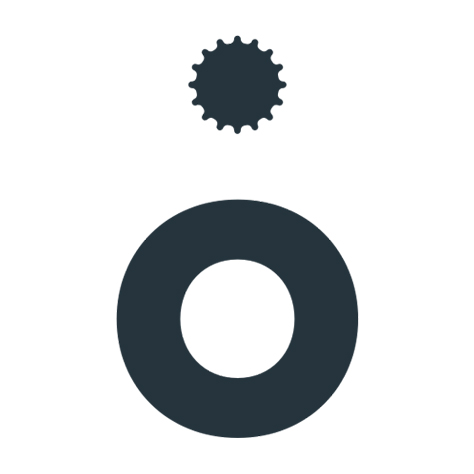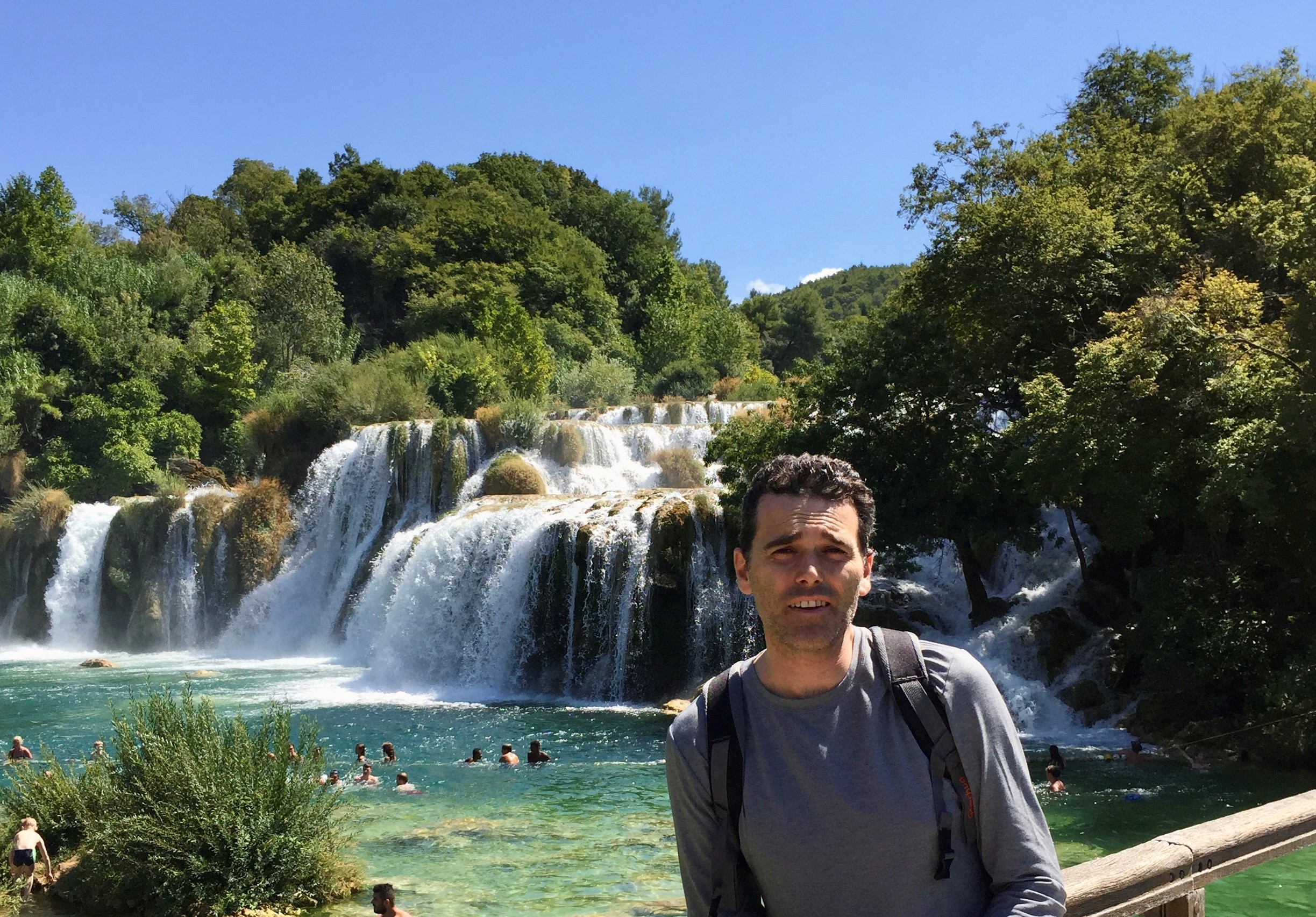Botanist of the month: Ricardo Garilleti
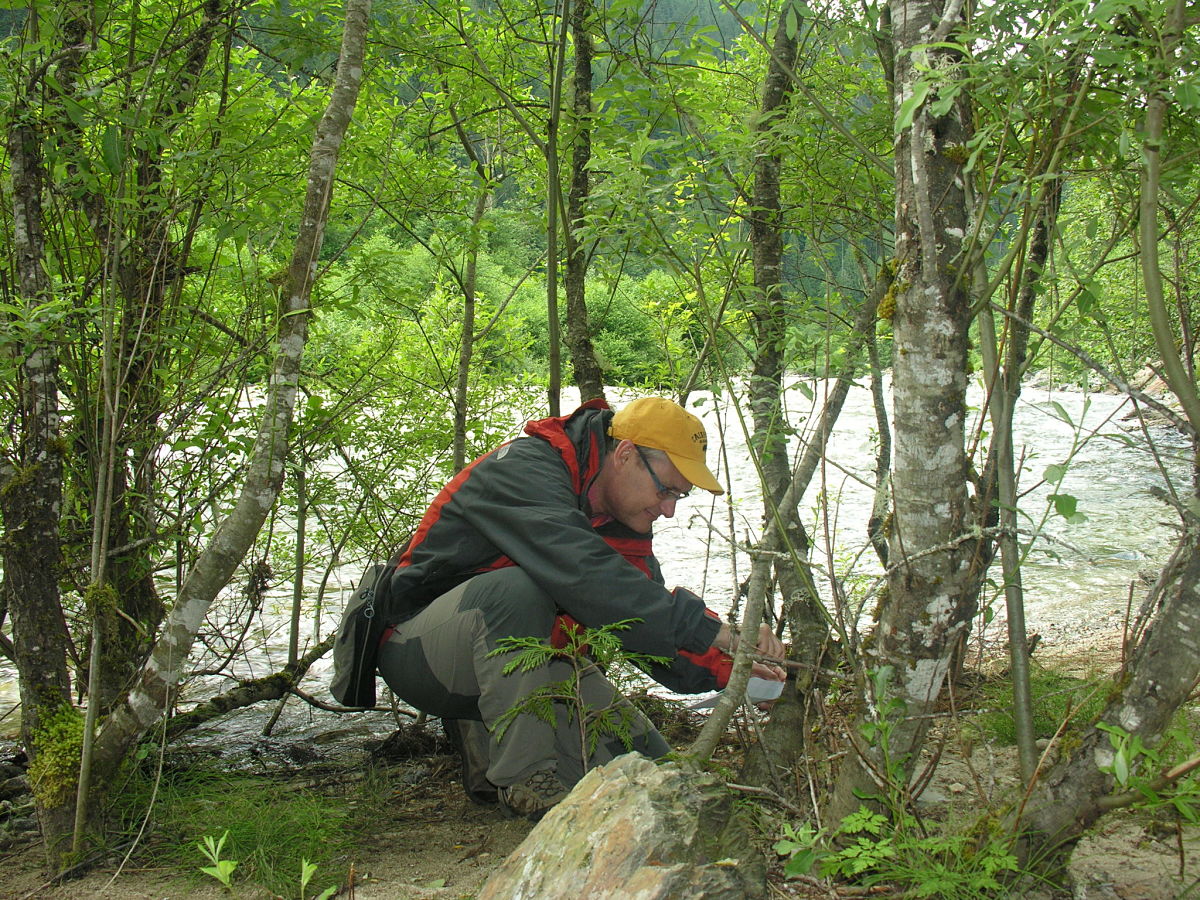
His passion for botany awoke in the early years of his degree and, since then, he has not stopped travelling and researching in his main area of study, bryology. He is an expert in moss taxonomy and for him, he says, every new expedition is an adventure. He is concerned about the progressive loss of interest in plants that he observes in society. Professor at the University of Valencia and trainer of new generations of botanists, he tries to transmit to his students the need to be rigorous in what they do because "there are no short or easy ways". Ricardo Garilleti (Madrid, 1963) is our botanist of the month.
Why did Botany appeal to you?
This is an interesting question, for I consider myself a botanist with a strong vocation and dedication, and yet this discipline was not my first choice. Like so many other biologists of my generation, I am largely the result of the documentaries of Félix Rodríguez de la Fuente and Jacques-Yves Cousteau, and my first interest was in animals, especially marine cetaceans. Quite far from where I ended up scientifically. It was when I began my university studies at the Autonomous University of Madrid that, little by little, I discovered plants, superimposed on my interest in animals. The causes of this botanical interest are diverse and have more to do with my fellow students than with my teachers. The three teachers I had in the second year of General Botany were generally not very attractive. One of them seemed to want to scare the students, because of the lack of care she took in her classes – a reflection of her general lack of interest in science. Another, Antonio García-Villaraco, was an agraphic savant and not very entertaining in his classes, but he transmitted so much information about the structure of plants that he caught my attention; he must have been one of the few who really liked his classes. Finally, the last of my professors, Javier Fernández Casas, was a renowned botanist whom I met at a time when he was tired of the University and was preparing to go to the CSIC. His lectures were quite sui generis, with a lot of anecdotes and perhaps less formal transmission of knowledge. Curiously, he ended up being my PhD director.
How did this botanical interest develop?
A very interesting group of people got together in my classroom, botanically speaking. It was an original class, in the sense that it is the one that has produced the most professional botanists at my university. There were classmates with a great interest in botany and some of them were among the most brilliant of the year, and they underpinned my interest in learning about plants. Until then I had a serious defect which at that time had no name, but which affected and still affects the majority of the population: I had plant blindness. That is, we pay so little attention to plants that we are capable of looking for a long time at a photograph in which there are animals and plants and, in the end, not having seen or being unable to remember the plants in the image. This is not anecdotal, although it may seem so. It lies at the heart of the fact that many people do not appreciate the importance of protecting plants, whereas caring for animals has much more immediate support.
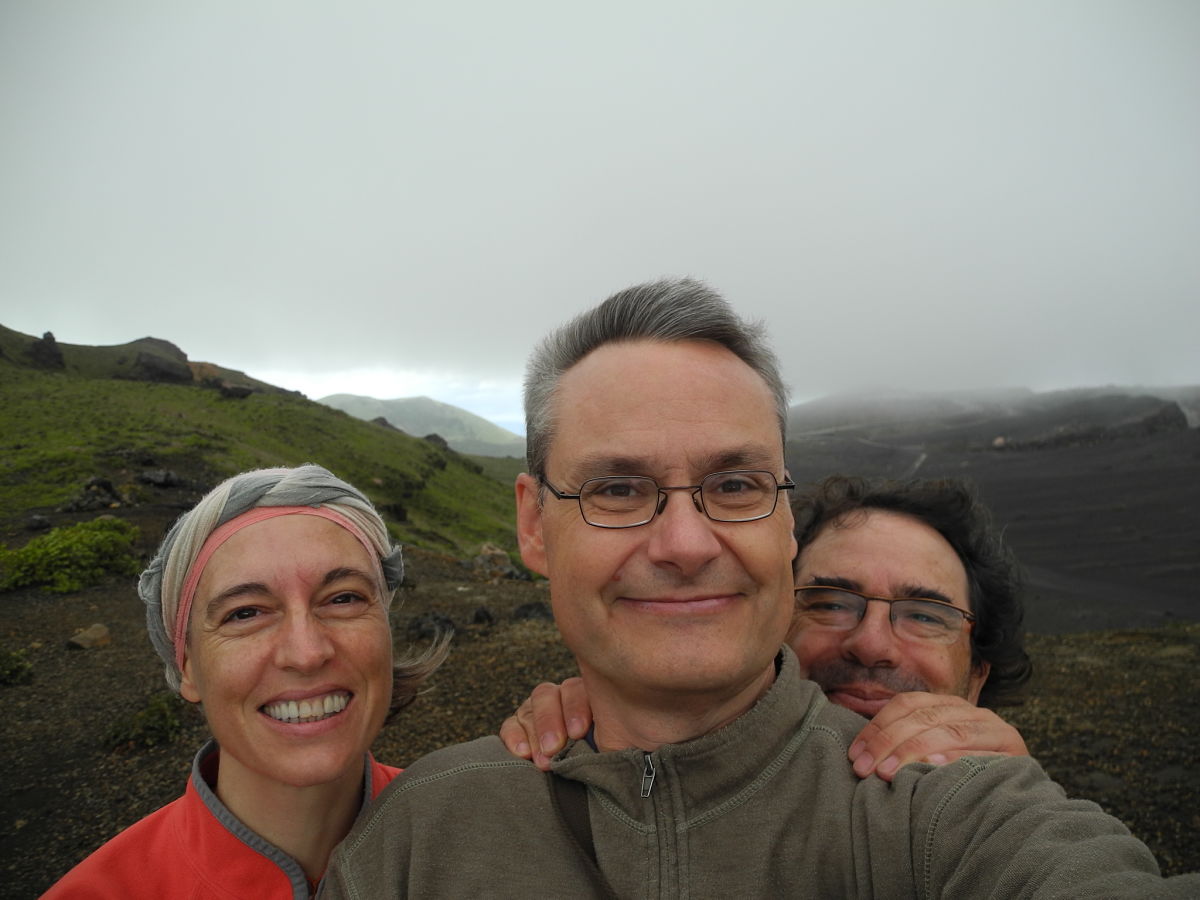
During my years of studies I got to know this group of organisms and, given that the Autonomous University of Madrid took great care of field trips, I learnt about their importance in the landscape, what they tell us about the environment in which they develop, the conservation of the surroundings, the human use of the territory and of the plants, the relationships they have with each other, as well as with animals and fungi. I discovered that they were the best approach to understanding the natural world and our position in it. Moreover, the beauty of a plant or plant communities is irresistible. When I finished my studies, it was obvious that I wanted to become a professional botanist and dedicate myself to scientific research.
Could you summarise your professional career?
After finishing my degree I started my PhD at the Royal Botanical Garden of Madrid (CSIC), working on nomenclatural aspects of the work of the Valencian Antoni Josep Cavanilles, perhaps a premonition that I would end up working in his city of origin. Botanical nomenclature is the way in which the name of a plant is regulated, and is an important part of a taxonomist’s work. This research work was not very experimental but very formative for the development of my scientific career. In those years I learned to locate and handle historical bibliography, to read with the Latin that has been used in Natural Sciences, I had to study the Code of Plant Nomenclature in its broad sense, that is, the rules that regulate how to name and publish plants and establish which name is the correct one when several have been applied to the same plant. Finally, I struggled a lot with the collections of the largest herbarium in Spain, working especially with historical collections, which have undergone many changes throughout their history and are complex to handle. The result was to clarify which plant names should be attributed to Cavanilles and to identify the specimens he used to describe the more than 1,100 plants he published. These original specimens of a plant are called nomenclatural types, and are the basis of any subsequent taxonomic study. They make it possible to understand the exact concept that an author had when he published a new species and thus to determine whether a problem specimen can be attributed to that species or belongs to another, possibly new, species. The result was the publication of two monographs of reference for any scientist working with plants described by Cavanilles or which closely resemble them.
What happened when you finished your PhD?
When I finished my PhD, back in 1991, I returned to the UAM, first as a postdoctoral fellow and then as a researcher linked to projects. It was a very interesting period that I remember as one of the best in my career and in my personal life, because of the people who were there and because of the diversity of lines that we started and that are still active for the most part. I became part of the team of bryologists that was being formed at this University and we are still working together on everything. It is my scientific team. With one of its members, Dr Francisco Lara, I have been working side by side since we were studying biology together and we have always been an effective working tandem. This relationship with an active team is so important that I cannot respond to this interview without often using the plural. I don’t see my activity as something individual. As well as professional, the change was also personal and changed my life for good. At the Briology Laboratory of the UAM I met Belén Albertos, who was starting her PhD there. We quickly fell in love and, shortly afterwards, we got married. After so many years, we are still together in both facets and happy to share them.

At the Autonomous University I started working in bryology, the part of botany that studies bryophytes, i.e. mosses, liverworts and anthocerotes, and we started a line of taxonomy of a family of mosses, which is the main interest of the team and in which we are now recognised as world specialists of reference. This is the line on which the vast majority of my scientific publications are based. However, this is not all we could do. The need to obtain technical projects in order to make a living while we were looking for contracts at the University led Paco Lara and me to collaborate with the Ministry of Public Works, under the different names it has been given, in studies related to environmental impact, the declaration of protected areas or the characterisation and state of conservation of Spanish riparian vegetation, a subject that ended up being of great importance in our career. These studies, which were largely aimed at the management of the natural environment, were very useful for my later teaching in Environmental Sciences.
How did your career continue?
In 1997 I joined a private university, the European University of Madrid, as a tenured lecturer. Those were five interesting years, because I was introduced to university teaching, but they were very hard. The high teaching load in private centres interfered tremendously with research, because there was hardly any time left for it. Within the Department of Environment I was supported and well regarded and, in fact, by appointment of the department I had the great honour of giving the inaugural lecture of the 1999-2000 academic year. However, the problems of combining teaching and research made me look for another place to work. Moving away from Madrid was not a problem.
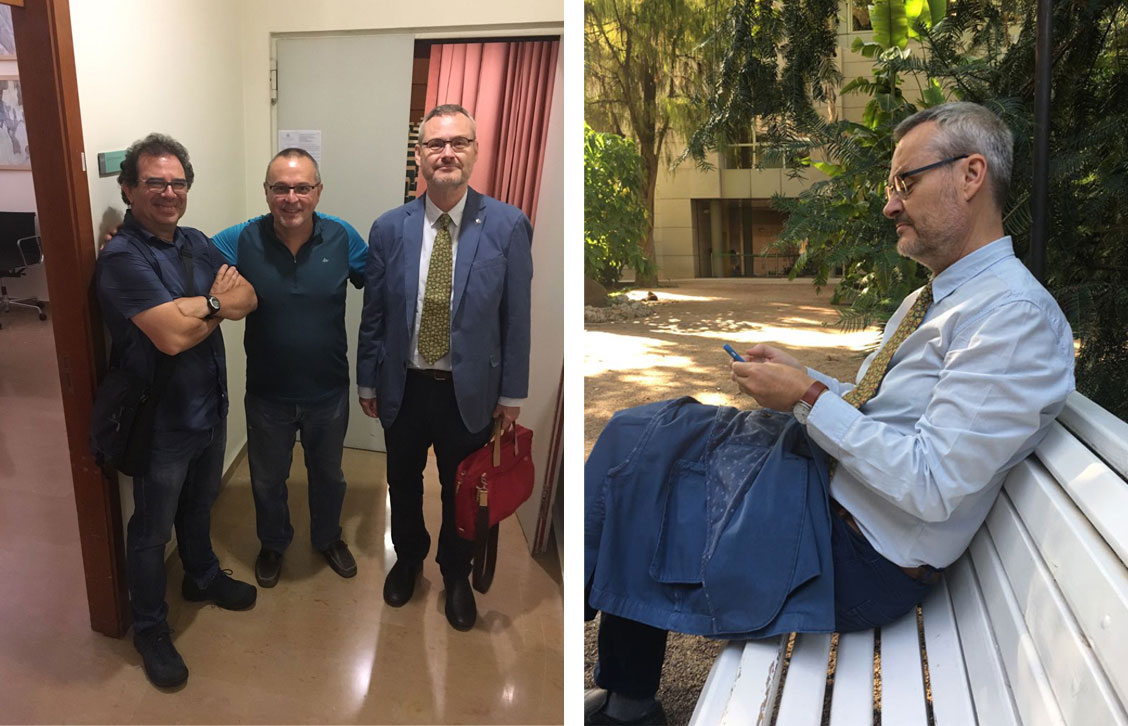
In 2002 I won the competitive examination to become a Full Professor at the University of Valencia, attached to the Faculty of Pharmacy, and a few years later I obtained the Chair. Coming to Valencia was an important personal change that I have never regretted, on the contrary. From a scientific perspective, in general terms, there have been few changes, apart from the difficulties of setting up a laboratory from scratch and without initially having adequate space for the type of research I do. Fortunately, I was able to quickly obtain the minimum means to start up and gradually set up the lab. I must say that, at one point, I was able to count on the help of the Faculty to refurbish a space that had very little use at the time and to organise a laboratory in accordance with our needs.
What does your work consist of?
Scientifically, it is very varied and even has some more technical or management derivations than one might initially think. My preferred line is bryophyte taxonomy. The task of taxonomists is to classify living things. It could be summed up as differentiating the different organisms on the planet, defining what makes them different from all the others, establishing which species are the most similar and making sure that each taxonomic rank (family, species, subspecies…) has a unique name. The latter is sometimes the most complicated, because the same plant may have been given different names throughout history. Think, for example, that the exchange of information was not so rapid in the past and that, at certain times, it was complicated (but not interrupted) by European wars. Or some descriptions of new species were so incomplete as to lead to confusion and to the fact that names for a single species were duplicated or triplicated. We taxonomists are the discoverers of new species, but we are also responsible for ensuring that each species, subspecies… has a single name.
Is your activity varied?
Although taxonomy can be done without leaving a laboratory, ordering folds from herbaria around the world, our team’s perspective is different. We are botanical explorers. We go on campaigns to explore and collect the mosses we study all over the world. This way of working provides a lot of study material, which allows us to establish the morphological limits of the species, to know their ecological requirements, the species with which they coexist and the substitutions of one for another when environmental conditions change. Furthermore, as these explorations are highly specialised and targeted, they have allowed us to find many previously unknown species, with a good knowledge of them. So far, we have been able to collect mosses, apart from Europe, in very different places such as Japan, New Zealand, South Africa, Kenya, Tanzania, America – from Alaska to Cape Horn -, South Africa… The list goes on and on and we have not stopped yet. Each collecting expedition is in itself a very enriching personal and scientific adventure in every way. Well, except financially, of course.
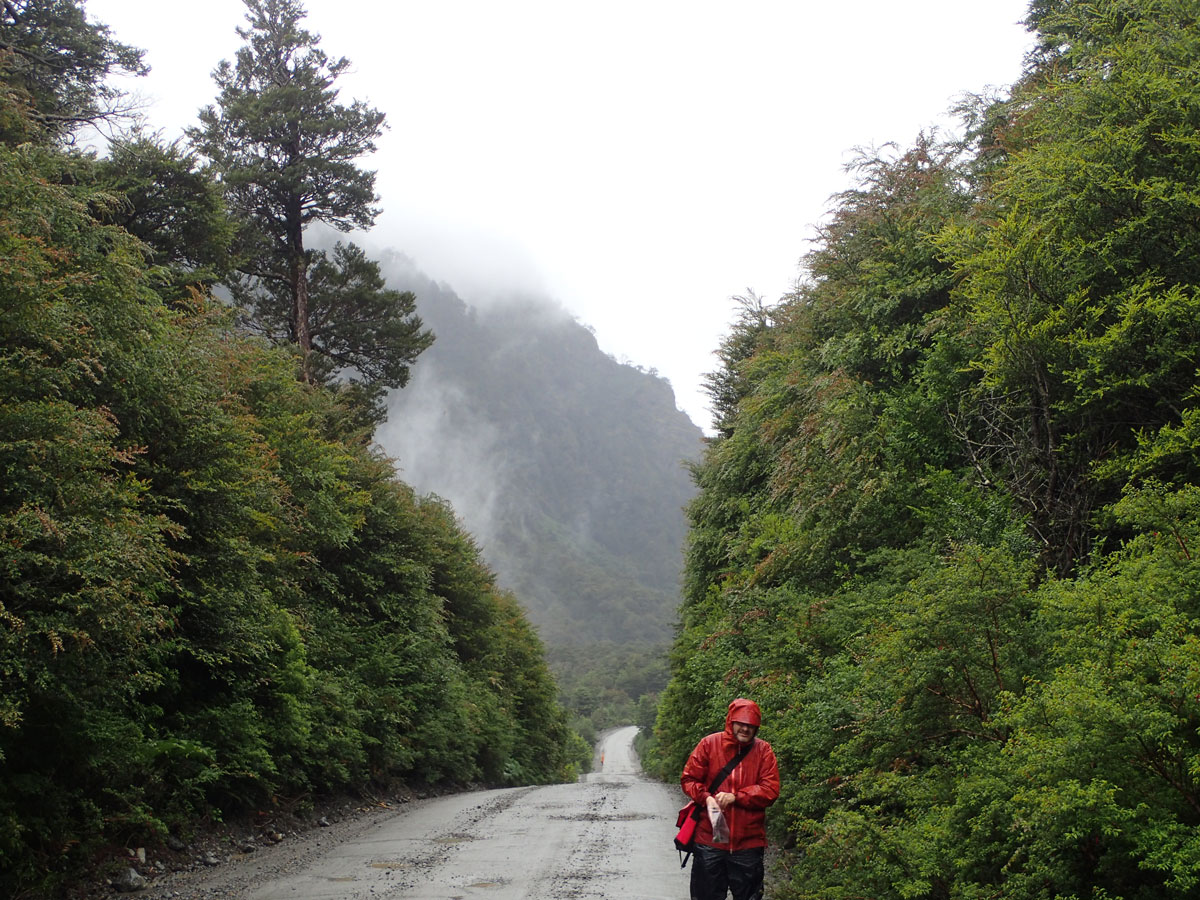
As a result of this line, we have described or claimed a good number of species and reorganised a couple of genera of our study family, Orthotrichaceae, one of the most numerous in moss species. Without leaving bryology, Belén Albertos and I coordinated, from Valencia, the elaboration of the Atlas and Red Book of threatened bryophytes in Spain, the reference work for the conservation of bryophytes in Spain. Almost the entire community of bryologists in Spain participated in this volume. And some from abroad. A further step in this direction was the participation as a specialist in the Orthotrichaceae family in the recent Red Book of the bryophytes of Europe, produced by the International Union for Conservation of Nature.
And what about other fields of study?
Not to be forgotten is the work I have done on bryoflora or conservation in Antarctica. This is a line that still needs to be developed further, but is very promising. Another line of study, which is completely different, is the woody vegetation of Spanish riverbanks, which we have carried out in parallel. It arose as a series of works for the Ministry of Public Works to earn my living and ended up being a complete synthesis of the plant formations of Spanish rivers and watercourses. I am very happy with this work. The physiognomic-floristic-ecological classification that we established, after more than fifteen years of field and office work, is used by the Ministry for Ecological Transition for the monitoring of the Habitats of Community Interest of the Habitats Directive. As a result of these studies, we were asked to develop methodological guidelines for this monitoring. Recently, new perspectives have opened up, and it is possible that this line will become more important in the near future. This would be, without disregarding the previous one, the line that involves a greater transfer of knowledge to society.
Your speciality is Taxonomy of mosses. What appealed to you about that field of study?
The answer to this question is simple: curiosity. The large number of questions that immediately arose when starting to study them, including the existence of a high number of potential new species which is a magnet if you have a vocation as a taxonomist, as in my case. It also meant working from different scientific perspectives (morphological, biogeographical, ecological), which is always very attractive. Finally, we soon saw the possibility of concluding the studies with a general treatise that solved many of the problems of the complex taxonomy of Orthotrichaceae. This final contribution – not yet achieved – was a good incentive.
Are you proud to have been involved in a particular project?
In general, they have all been satisfactory and very enriching. I may have a preference for a particular one, but it is more difficult to be precise. Many lines of work are pursued through linked and branching projects, so I see my career in plant taxonomy or riparian studies as large projects with several stages, some of them more interesting. And I am equally happy with both. Usually, you tend to be happier with the project you are working on at the time, possibly because you are answering questions you have asked yourself and you see how the science you are doing is progressing. So, perhaps rather than being proud of some stage or project, I could say that there are some with which I do not feel so identified. But I will not talk about these here.

What project are you working on at the moment?
I am currently more focused on the study of the genus Ulota in the southern hemisphere. It is a genus of small corticolous mosses, reasonably rich in species and with a very large and poorly known taxonomic complexity. Traditionally it has been considered – perhaps not very accurately – that mosses tend to have very large ranges, thanks to the fact that their small spores can be transported over long distances. However, this genus seems to show a different behaviour in that territory, and all the species from Patagonia, known to be the main centre of diversity of the genus, are exclusive to there. Although it has been proposed that there is an “air bridge” between Patagonia and New Zealand, caused by strong E winds, it does not seem to be used by species of this genus, and the two territories are not so connected. There are a number of strategies characteristic of southern species to reduce long-distance dispersal capacity, such as large spores (the largest in the genus) which, in some species, begin to divide before germination, and even germinate inside the capsule, before being released. Furthermore, it seems that the high diversity present has been underestimated and the final number of species may be higher. The aim of this project is to identify and explain the taxonomic diversity and evolutionary relationships within this genus in the southern hemisphere using different approaches: morphological, molecular, ecological and biogeographical. The results we are obtaining are very good, with four new species described and the identification of some that are clear candidates to be new and on which we are working right now.
What impact or repercussions do results like this have?
Knowledge of biodiversity is, in itself, a great result. If, in addition, you increase what is known about the evolutionary relationships and coexistence between species in an ecosystem and between different ecosystems, their different – or not so different – geographical origins and how their distribution has changed over time, how communities are structured in space and time…, you will have data and tools to better understand biological evolution, the state of nature on the planet and maybe, just maybe, to learn how to conserve it.
How do you think your work has changed over the years?
The change in some aspects has been very radical. From the point of view of morphological studies, apparently somewhat stable, the development of statistical techniques better suited to these studies, the different types of optical or electron microscopy available, image analysis programmes, etc. has improved the conclusions reached by this more classical route. In addition, they mean that the studies can be carried out more efficiently, which is a good thing, as this compensates for the fact that, over time, the number of samples and morphological characters we use has increased considerably.
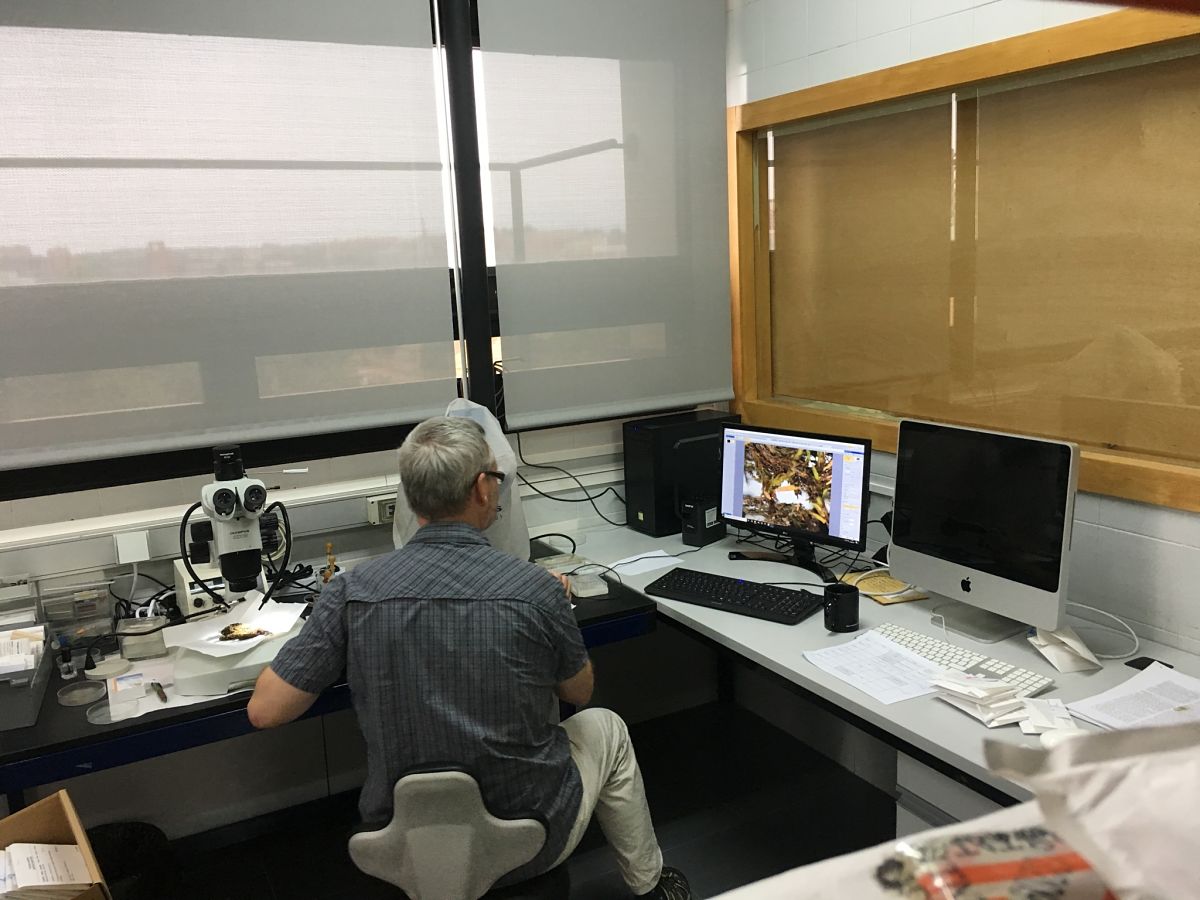
The big revolution has been molecular, of course. First, Sanger sequencing of a few markers, and now next-generation sequencing, which has given way to genomics, provides highly precise tools for studying plant parentage and evolutionary processes. It makes it possible to research aspects that were previously impossible. In other methodologies, there have been no changes for a very long time. We still need good representations of the species under study to estimate their morphological variability, we use nomenclatural types as a tool for comparison, we sniff through herbaria, from which we borrow as we did more than a century ago. This would be the romantic part of science, because it implies continuity with what the founding fathers of modern botany did.
As a professor at the University of Valencia you have seen several generations of students pass through. What is important to you as a teacher?
Undoubtedly, transmit passion for what we do. If you are passionate about botany, you will also transmit a good deal of knowledge. Some of it will be in your notes or reference texts, but much of it will come directly from your professional experience. If you can pass this on, you are likely to communicate your love for this science to them and, in the best case scenario, it will rub off on them. Apart from this, it is essential that they learn to be rigorous in what they do. Here or in any other science. That they learn that there are no short or comfortable paths; that if you do not dedicate yourself seriously, you will not achieve the goals you are looking for, the main one being to be really satisfied with what you are doing.
Have you met interesting people through your work?
You meet a lot of people through these activities. You travel in off-the-beaten-path or unusual terrain and also attend national or international meetings attended by a wide variety of people, mostly botanists, but not all. One person who made a special impression on me, because of her sad significance, was Cristina Calderón. She is, because I believe she is still alive, the last person to have lived the Yaghan culture and the last who had this language as her mother tongue. She was born in 1928 and I am not aware that she has left us. The meeting took place in 2012, during the inauguration of a biological station on the island of Navarino, Chile, on the southern shore of the Darwinian Beagle Channel. Despite the scientific and political content of the event, this woman was the real centre of attention. Everyone there – military, politicians, scientists – knew what Cristina Calderón stood for, and they were respectfully and affectionately pointing it out to her. The Yaganas were the native culture of this island and what still remains of them is a recovery of their craftsmanship and the maintenance of the language, because Cristina taught it to her granddaughter, who tries to pass it on to the children. With her will disappear the last remnants of a society that her grandchildren are somehow trying to resurrect. She spoke to us a little in Yaghan, especially because those of us who came from abroad could hear the language of her parents, but not of her children, as she told us. I am left with the memory of this little woman speaking a language with sounds so different from the ones she is used to hearing.
What is your assessment of the employment situation in the sector?
Whoever says that any field of natural sciences is in a prosperous employment situation should change their medication, before it becomes irreversible. There have never been many jobs in our area of interest, although the development of environmental protection legislation at different administrative scales opened up not inconsiderable job possibilities. Possibly, the management of the natural environment, including the particular field studies that are necessary for it, is an important source of work, both in the administration and in public or private companies. This is not to say that there is an abundance of them.
In terms of scientific activity, anyone interested in it will know that Spain is chronically underfunded and, what is worse, science never seems to be an object of interest, although it has been demonstrated that there is a direct relationship between research in any area and wealth creation. However, if you have the ability and a great, great vocation and tenacity, it is possible to pursue a professional career in Botany. And there is always the possibility of pursuing this career outside our country. It is a shame that good researchers are trained here and the result is that they have to go and work in another country, where they will generate knowledge and, with it, wealth.
What does the future hold for Botany?
I believe that, as a discipline or set of disciplines, the future is as promising or more promising than it was in the past, with the advantages of new techniques of all kinds that can already be applied now and that will improve and surprise us in the future. We have everything we need for the scientific revolution we are living through to continue with plants. In addition, there are vast fields of study. Apart from other areas, we have much to discover about plant diversity still hidden from our knowledge and how to protect it. That said, there are also dark clouds and sometimes it is hard to see the silver lining, which tells us that there is always something positive to be found in adversity.
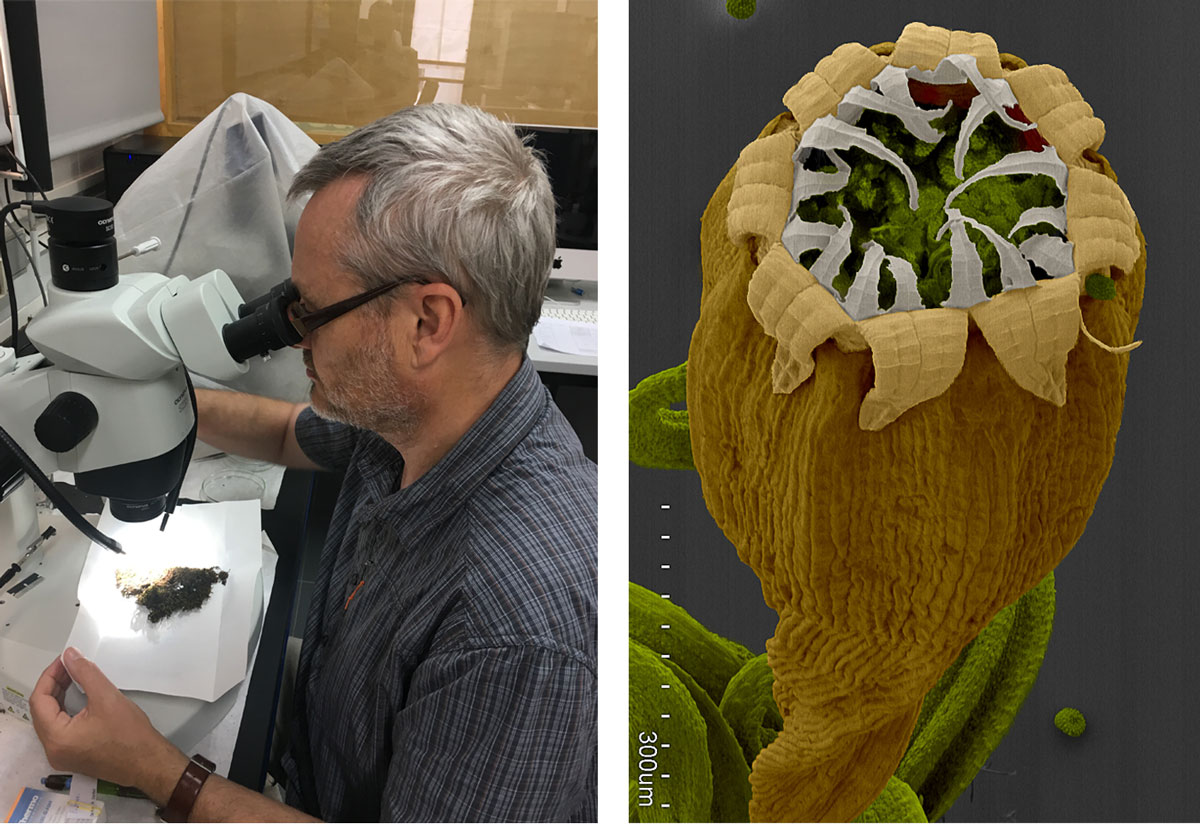
While the tools to improve knowledge are there and the most leading advancement is likely to continue without serious interruption, other, more basic knowledge may be at risk. Since industrialisation, much popular affection for plants has been lost, the blindness I referred to earlier. Without this esteem it will be impossible, firstly, to preserve many endangered plants that are now dependent on us, after we have brought them to almost unsustainable situations. On the other hand, this disaffection is causing interest in botany to wane. It is true that since the 19th century it is not the favourite natural science, this place is undisputedly occupied by zoology, but I think I observe little desire to learn plants by too many students I have met. The development of computer applications to identify a plant from a photograph has, along with its apparent advantages, serious dangers. The first is that it can convey that it is very easy to name a plant and that, moreover, they are not complex groups with much greater diversity than they appear to be. Many necessary characters are not observed, leading to identifications based on reasonable similarities. There is no doubt that this type of application has a lot of margin and potential to improve and even arrive at correct identifications, once you provide the necessary images, which the application itself can request as it refines the first identification. That’s great. The problem, from my point of view, is that the general interest is lost and with it the in-depth knowledge necessary to get to these applications. Besides, we cannot consider that we already know all the plants in our old environment, let alone the many areas still poorly explored and the many poorly known plant groups.
Which is the essential skill for your job?
I think it makes my job much easier to have good observation skills and a good ability to relate observations to each other, together with a good memory, at least for what you are working on. This kind of memory allows you to remember where and when you have seen a certain plant or which ones share some key morphological or ecological character. This is the basis of floristics, first, and then taxonomy.
What period of botany would you have liked to live in and why?
Frankly, there is no better time than the present. Access to little or unexplored territories, the biological revolution that DNA sequencing and now genomics has brought to our understanding of evolutionary relationships, the availability of materials from anywhere in the world, Internet access to previously inaccessible or unknown information… These are powerful reasons why the work today is better than ever before. Apart from that, and since I understand that you want me to look back, the great era of scientific exploration in the 18th-19th centuries was fascinating. But the chances of having been able to participate in any of them or still study their collections are so low that I would probably have been left out. Science has been democratised and this is another advantage of our time.

Which botanist would you have liked to meet in person?
Although Alexander von Humboldt is not a name we immediately associate with botany, he is the author of more than 300 plant names. I believe that with this number he can even be considered a prolix botanist. In addition to this taxonomic part, Humboldt was the first to observe or describe in detail changes in the distribution of plants with altitude, laying the foundations of phytogeography. With all his travelling experiences and encyclopaedic knowledge, talking to him, listening to his views on the nature of half the world, must have been fascinating.
In all these years as a botanist, which is the most curious or the funniest situation, which can be told, you have found yourself in?
Curious things happen more when you go out of your environment, in collection campaigns. I don’t want to say that things don’t happen in the lab, but not so many. If you ask me about three striking things, the summary would be: I have been shot at, I have had to drive a Moroccan narco’s car with no brakes on a mountain track, or I have been on a beach near the epicentre of a big earthquake. Then things are not so interesting. Or maybe they are, I no longer know.
Portugal and I felt the displaced air in my face. It was very close. We explained oueselves in “portuñol” and, in the end, we all ended up – us scared to death – having liquor, chestnuts and red sausages with the owner of the house, a man who was hospitable and charming when he put down his shotgun. The car in Morocco was a rookie mistake. We asked for a track up a mountain in the Rif without thinking that we might be asking someone in the drug business, which is not so unusual there, especially if you see that he has a car apparently in good condition. He said he would give us a lift, but that I should drive his car. It turned out that it was pretty beat up and had not known what a brake was for a long time, something I discovered on the first downhill bend by the cliff and confirmed on many more that followed the first one. As it turned out, he took us to the head house to try to sell us the local produce. With some diplomatic effort and a fair amount of trepidation we managed to get out of there with only a peppermint tea.
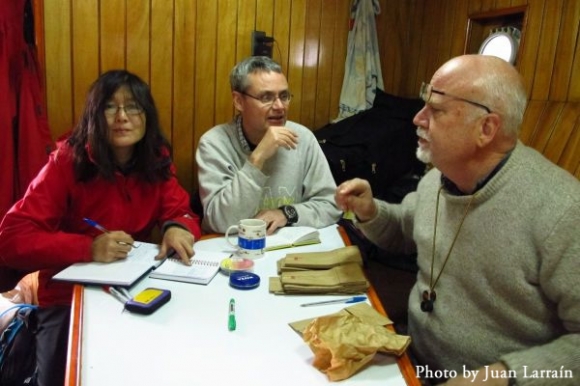
Finally, the earthquake happened in the south of Chile and was the second most powerful earthquake in the country since they have been measured. We didn’t even notice it when it happened, even though we were about 70 km from the epicentre – right next door. We were in a car at the time and thought the movement was due to the wind. We went down to collect on a beach and a tsunami emergency warning came on our phones, which we did not expect. Needless to say, we left the beach like bats out of hell. It was the only spot we didn’t herborise thoroughly in that campaign.
Do you work alone or as part of a team?
I have always worked in a team and I think there is no better way to do it, both professionally and personally. You need a good relationship between the members of a team if you want it to be an enjoyable job, and I have been very lucky in that respect. A good team brings together different personalities with different interests. The result is that both the group’s fields of research and the techniques used are broadened, thanks to the varied specialisations of the team members. In our team, there are clearly differentiated functions, but with significant areas of intermingling between them. This also contributes to richer scientific discussions. In my case, the team is somewhat particular, as it is divided between two sites, the University of Valencia and the Autonomous University of Madrid. In Valencia we are only Belén and I at the moment, while the Madrid section is the largest, with five people. This has good and bad things. The bad thing is that we miss the day-to-day contact, talking about enriching collateral scientific aspects that are not easy to bring up at other times. You miss the contact with friends. Also, sometimes communication may not be as fluid, although we try to make sure that this is not the case. Although the Valencian enclave has, so far, only a minimal group, we can maintain different interests and support each other in their realisation. This contributes to improving both the working spirit and the results. Between two people we maintain, with greater or lesser intensity, depending on each moment, several lines of activity.





